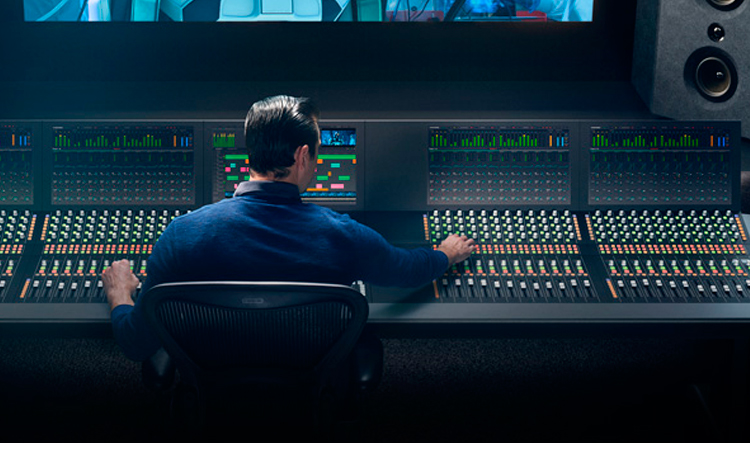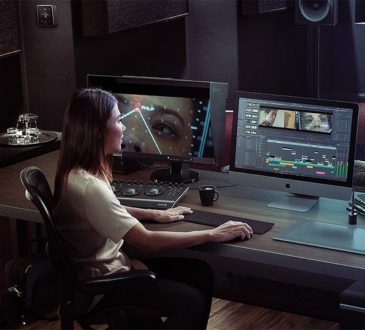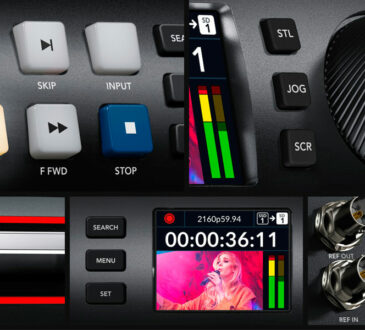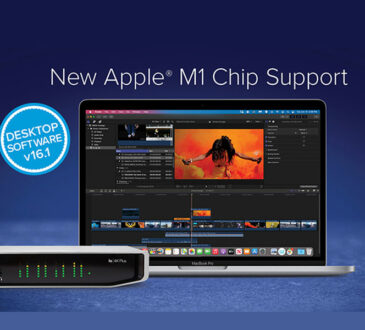
About DaVinci Resolve 15 Software
This software update addresses issues with running DaVinci Resolve on case sensitive drive volumes, improves stability on systems running CUDA, makes live save during remote grading sessions more reliable, properly premultiplies RGBA images when using OpenFX plugins. This update also improves Blackmagic RAW setting functionality, makes ResolveFX more reliable on the colour page, addresses issues with Fusion paint, Fairlight audio, and dozens of other general performance and stability issues. Technical support for the free version of DaVinci Resolve is available via the Blackmagic Design community forums.
What’s new in DaVinci Resolve 15.1.2
- Addressed an issue where starting DaVinci Resolve would cause a crash on some CUDA enabled Windows laptops with integrated graphics
- Addressed an issue where the viewer would flash between video and data levels during playback on some systems running on CUDA
- Addressed an issue where the Delete Through Edit context menu option would incorrectly be shown for all edit points on the Edit page
- Addressed an issue where reconforming clips with remote grades would sometimes cause a crash in collaborative projects
- Addressed an issue where dragging an audio clip into audio track layers would sometimes cause a crash in the Edit page
- Addressed an issue where dragging an audio clip with no mapped channels into the timeline would cause a crash
- Addressed an issue where track mute controls would sometimes show an incorrect automation state on the Edit page
- Addressed an issue where copying clips in the Fairlight page would sometimes cause a crash
- Addressed an issue where incorrect audio formats would be shown for muted audio tracks in the Deliver page
- Addressed an issue where Fusion comps with the paint tool applied would sometimes result in the first frame being black
- Addressed an issue where RGBA images would not be processed premultiplied when using some OpenFX plugins
- Addressed an issue where applying stabilization on video clips with odd resolutions would cause a crash
- Addressed an issue where source render cache would not be preserved when applying grades from stills or other clips
- Addressed an issue where adding a ResolveFX node to a clip during playback in the Color page would display a critical exception
- Addressed an issue with the DCDM (P3D65 Limited) IDT in ACES 1.1 projects
- Addressed an issue where trimming some MP4 clips using media management would not succeed
- Addressed an issue when rendering to QuickTime ProRes 4444 where the output would sometimes have chroma overflow artefacts
- Addressed an issue where the ISO selection would sometimes incorrectly be hidden when using RAW clips
- Addressed an issue where playing back some smartphone clips captured in portrait mode would cause a crash
- Addressed an issue where rendering Sony clips with Japanese file names using source filename would not work correctly on Windows
- Addressed an issue where the Photon validation options for IMF packages would not be displayed when Java Development Kit version 11 was installed
- Addressed an issue with stability in remote grading sessions when the client machine had live save enabled
- Addressed an issue with running DaVinci Resolve on case-sensitive volumes on Mac
- General performance and stability improvements
Pre-installation Notes
- Support for decoding and encoding of easyDCP formats is not currently available on Linux
Performing Audio Ducking using Sidechain
DaVinci Resolve now supports automatic audio ducking using sidechain in the Fairlight page Dynamics effect.
Enable “Send” in the track dynamics compression section on one of multiple tracks where you would like to emphasize or prioritize the audio. Then enable Compression and “Listen” on all the tracks you would like to compress or duck. The threshold and ratio can be adjusted in the compression settings to modify the amount of compression in the signal.
External Audio Processes
DaVinci Resolve now has support for a round-trip mechanism which allows any clip on the timeline to be sent to an external application for audio processing. The updated file created by the external audio process is automatically added to the timeline as a new layer.
External Audio Processes can be added and managed in the Audio Plugins section of System Preferences. The round-trip process can be triggered from the clip context menu on the timeline.
Generating Supplemental IMF Packages
DaVinci Resolve Studio now supports generation of supplemental packages for IMFs when using Resolve’s Kakadu-based J2K decoder and encoder. Please note that you will need to disable the easyDCP decoder option in the Configuration tab of System Preferences to enable this feature.
With an IMF composition in the Media Pool, you can select “Create New Timeline Using Composition Playlist” in the clips context menu to create a new timeline. If the IMF package has any associated Dolby Vision metadata, it can be applied using an option in the creation dialog.
Any portions of the IMF timeline can now be replaced with source clips from the Media Pool. The timeline clip’s context menu has an option for not including the replacement clip for supplemental packages. There is an additional context menu option for selecting either the original or updated Dolby Vision analysis and trim metadata.
In the Deliver page, the “Supplemental Package” option can be enabled in order to generate the supplemental IMF using the new clips and the Dolby Vision metadata.
Performing Photon validation on IMF packages
DaVinci Resolve Studio now supports validation of IMF packages using Photon. In order to activate this feature, the Java Runtime Environment (JRE) will need to be installed on the machine.
Photon validation can be performed by right clicking on IMF packages in the Media Pool and selecting “Perform Photon Validation”. Additionally, there is a checkbox in the Deliver page advanced video settings to perform Photon validation after the IMF package is rendered.
Minimum system requirements
for macOS
- macOS 10.12.6 Sierra
- 16 GB of system memory is recommended and 32 GB is recommended minimum when using Fusion
- Blackmagic Design Desktop Video version 10.4.1 or later
- CUDA Driver version 8.0.63
- NVIDIA Driver version – As required by your GPU
- RED Rocket-X Driver 2.1.34.0 and Firmware 1.4.22.18 or later
- RED Rocket Driver 2.1.23.0 and Firmware 1.1.18.0 or later
for Windows
- Windows 10 Creators Update
- 16 GB of system memory is recommended and 32 GB is recommended minimum when using Fusion
- Blackmagic Design Desktop Video version 10.4.1 or later
- NVIDIA/AMD/Intel GPU Driver version – As required by your GPU
- RED Rocket-X Driver 2.1.34.0 and Firmware 1.4.22.18 or later
- RED Rocket Driver 2.1.23.0 and Firmware 1.1.18.0 or later
for Linux
- CentOS 6.8
- 32 GB of system memory is recommended minimum
- Blackmagic Design Desktop Video version 10.4.1 or later
- NVIDIA/AMD Driver version – As required by your GPU
- RED Rocket-X Driver 2.1.34.0 and Firmware 1.4.22.18 or later
- RED Rocket Driver 2.1.23.0 and Firmware 1.1.18.0 or later
Upgrading
Upgrading your PostgreSQL database server on Mac
Until DaVinci Resolve 12.5.2, the Mac installer used to ship with PostgreSQL version 8.4.2. Starting from macOS Sierra 10.12, PostgreSQL version 8.4 is no longer supported. If you intend to upgrade to the latest OS, you will need to upgrade your PostgreSQL database server to version 9.5.4 prior to upgrading macOS. Once your PostgreSQL installation has been upgraded and your data has been ported, you can then proceed with your macOS upgrade.
We have provided apps to simplify upgrading your PostgreSQL version on your Mac.The apps along with instructions can be found in the:
/Library/Application Support/Blackmagic Design/DaVinci Resolve/Upgrade PostgreSQL
folder. Starting from DaVinci Resolve 12.5.3, new installations will include PostgreSQL version 9.5.4.
Download Information
This download is available for the following operating systems.
Removing DaVinci Resolve Software
from Mac
To remove DaVinci Resolve from your system, double-click the Uninstall Resolve icon.
from Windows
To remove DaVinci Resolve from your system, go to the Programs and Features control panel, select DaVinci Resolve, click on Uninstall and follow the onscreen prompts.
from Linux
To remove DaVinci Resolve from your system, select the uninstall option after running the installer.
We have the entire Blackmagic Design range available on our website. ESV offer next working day delivery* FREE over £99!
If you require further information or assistance you can do so, either through our ‘chat’ function, email: [email protected] or by phone: 0203 137 2901; we’re always here and happy to help.
Featured in this article:
* Item must be in stock at time of purchase
Prices right at time of publishing.


